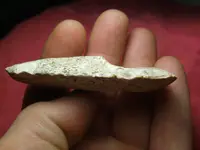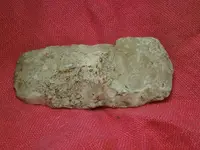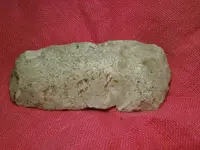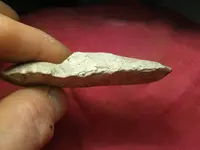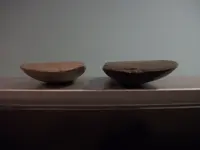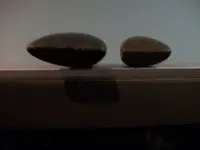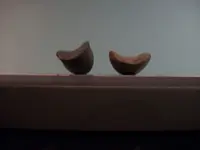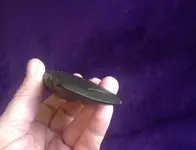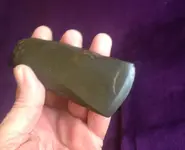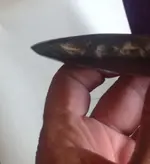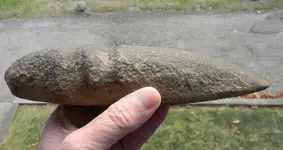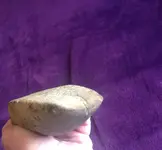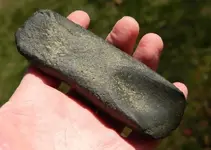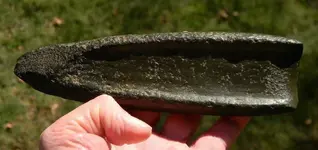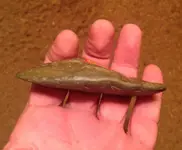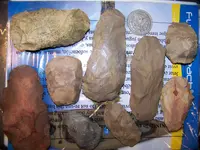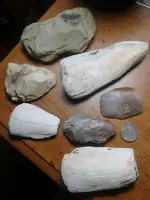Not sure I can ID the piece that started the thread, but there has been some not quite accurate info conveyed and perhaps I can clarify, speaking of ground stone adze and gouges only. Both will have concave leading edges or bits. Channels are a whole different thing. Not all adze have channels, so the length of such cannot be how gouges and adze are distinguished. Also, not all gouges have a full channel. Here are a couple adze. The first has no channel at all. Looking at the outline of the beveled leading edge in the third photo, it looks quite similar to the first photo of the piece that began this thread, and I can understand seeing that piece as an adze based on the bit outline in the first photo. IMHO. I don't know if it is, but I can understand the call. The double grooved adze has only the shallowest of short channels. It is not accurate to say both adze and gouges have channels and that what distinguishes them is there length. Not so. They are very similar and related tool forms, though, and it can be a tough call whether gouge or adze in some examples I've seen.



